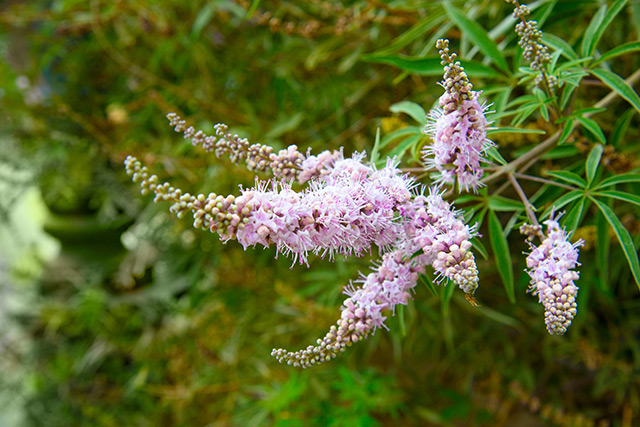
As women get older, their ovaries produce fewer eggs of lower quality. However, this decrease in fertility can happen much earlier for some women. Such a condition is referred to as premature ovarian aging.
Fertility drugs are used to improve the rate of pregnancy for infertile women. Letrozole, for example, works by inhibiting the production of estrogen.
However, these drugs are known to have negative effects on health. The side effects of the aforementioned letrozole include hot flashes, painful joints, and physical weakness. These problems led researchers to for better alternatives to increase fertility. (Related: Shock claim: Diet sodas are putting your fertility at risk.)
A fertility herb from Western traditional medicine
Traditional medicine systems use herbs to treat all kinds of imbalances and maladies. In Western folk medicine, chasteberry is prescribed to women suffering from pre-menstrual syndrome.
The herb is also used to increase the fertility of women. Experts believe that chasteberry contains compounds that affect the hypothalamus and pituitary glands. The former gland secretes gonadotropin-releasing hormones that stimulate the latter.
The pituitary gland is responsible for releasing follicle-stimulating hormones, estradiol, and anti-Müllerian hormones.
These three natural chemicals are closely related to fertility. High levels of anti-Müllerian hormones are considered to be a sign of good fertility. Meanwhile, the lower the amount of follicle-stimulating hormones and estradiol, the better the chances of successful fertilization.
Comparing a synthetic fertility drug and a natural fertility herb
Researchers from the Shahrekord University of Medical Science (SKUMS) considered chasteberry as a potential means to improve the fertility of women suffering from premature ovarian aging. They processed the plant to create an extract and gathered patients with the fertility-related condition.
Half of the participants of the experiment were given the fertility drug letrozole for four days after the third day of their menstrual cycle. The other half also received chasteberry extract on top of the letrozole treatment.
The dosage of the herbal supplement was 40 drops. It lasted for four months, the duration of the follicular phase of the womb.
The SKUMS researchers evaluated the ovulation days, the thickness of the endometrium that lines the uterus, and the estradiol levels on ovulation time. They also measured the amount of of follicle-stimulating hormone, anti-Müllerian hormone, and estradiol present.
Chasteberry extract is a safe and effective fertility aid
They found that both fertility treatments succeeded in raising the serum concentration of the anti-Müllerian hormone. High levels of this chemical indicated higher fertility.
Furthermore, the chasteberry-supplemented group showed greatly reduced concentrations of follicle-stimulating hormone and estradiol. While these two chemicals are vital to the healthy function of the female reproductive system, they can also interfere with successful fertilization.
Taking chasteberry extract during ovulation days was shown to greatly reduce estradiol levels. It also shortened the average time to complete a serum positive beta-hCG pregnancy test.
The herbal supplement group showed much better results throughout the trial period. Patients who took chasteberry drops scored better in terms of ovulation day, developed thicker endometriums that made fertilization more likely and had much higher chemical and clinical pregnancy rates.
Based on their findings, the Iranian researchers concluded that chasteberry can improve fertility rates for women with premature ovarian aging. They believe the herb can be used to amend infertility with great success and safety.
Natural Health.news contains more stories about fertility-boosting herbs like chasteberry.
Sources include:
Please contact us for more information.






















